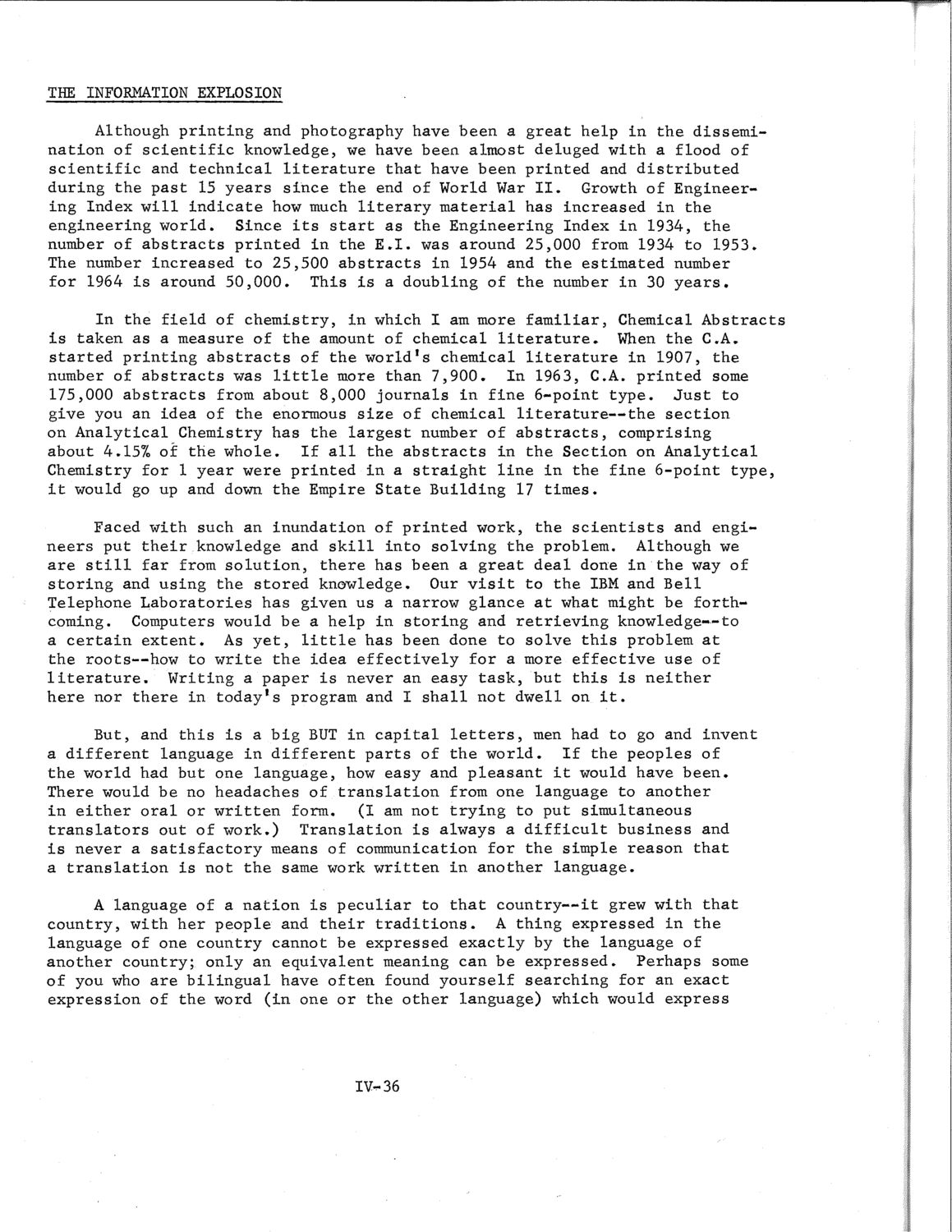| |
| |
Caption: SWE - Proceedings of the First International Conference of Women Engineers and Scientists
This is a reduced-resolution page image for fast online browsing.

EXTRACTED TEXT FROM PAGE:
THE INFORMATION EXPLOSION Although printing and photography have been a great help in the dissemination of scientific knowledge, we have been almost deluged with a flood of scientific and technical literature that have been printed and distributed during the past 15 years since the end of World War II. Growth of Engineering Index will indicate how much literary material has increased in the engineering world. Since its start as the Engineering Index in 1934, the number of abstracts printed in the E.I. was around 25,000 from 1934 to 1953. The number increased to 25,500 abstracts in 1954 and the estimated number for 1964 is around 50,000. This is a doubling of the number in 30 years. In the field of chemistry, in which I am more familiar, Chemical Abstracts is taken as a measure of the amount of chemical literature. When the C.A. started printing abstracts of the world's chemical literature in 1907, the number of abstracts was little more than 7,900. In 1963, C.A. printed some 175,000 abstracts from about 8,000 journals in fine 6-point type. Just to give you an idea of the enormous size of chemical literature—the section on Analytical Chemistry has the largest number of abstracts, comprising about 4.15% of the whole. If all the abstracts in the Section on Analytical Chemistry for 1 year were printed in a straight line in the fine 6-point type, It would go up and down the Empire State Building 17 times. Faced with such an inundation of printed work, the scientists and engineers put their knowledge and skill into solving the problem. Although we are still far from solution, there has been a great deal done in the way of storing and using the stored knowledge. Our visit to the IBM and Bell Telephone Laboratories has given us a narrow glance at what might be forthcoming. Computers would be a help in storing and retrieving knowledge—to a certain extent. As yet, little has been done to solve this problem at the roots—how to write the idea effectively for a more effective use of literature. Writing a paper is never an easy task, but this is neither here nor there in today's program and I shall not dwell on it. But, and this is a big BUT in capital letters, men had to go and invent a different language in different parts of the world. If the peoples of the world had but one language, how easy and pleasant it would have been. There would be no headaches of translation from one language to another in either oral or written form. (I am not trying to put simultaneous translators out of work.) Translation is always a difficult business and is never a satisfactory means of communication for the simple reason that a translation is not the same work written in another language. A language of a nation is peculiar to that country—it grew with that country, with her people and their traditions. A thing expressed in the language of one country cannot be expressed exactly by the language of another country; only an equivalent meaning can be expressed. Perhaps some of you who are bilingual have often found yourself searching for an exact expression of the word (in one or the other language) which would express IV-36
| |